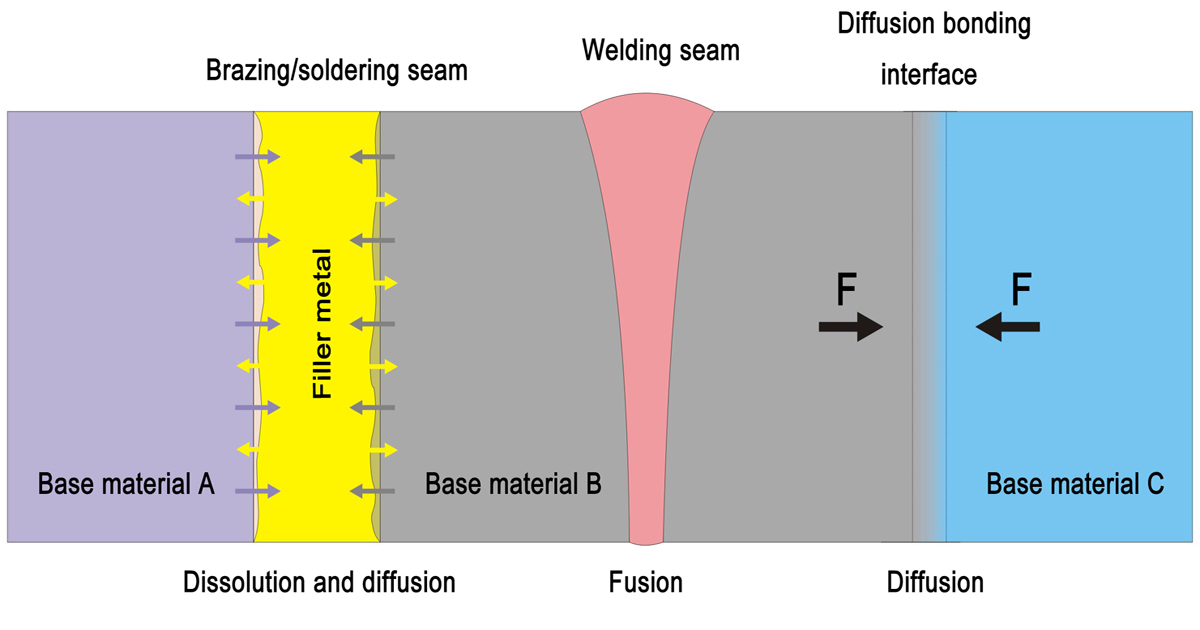Latest Research in Joining and Welding Processes
A special issue of Materials (ISSN 1996-1944). This special issue belongs to the section "Manufacturing Processes and Systems".
Deadline for manuscript submissions: 20 November 2025 | Viewed by 1306

Special Issue Editor
Interests: Pb-free solder; low-temperature solder; high-strength solder; thermal fatigue; creep; toughness; coupling damage; fracture mechanisms; interfacial microstructure; brazing; precision connection
Special Issues, Collections and Topics in MDPI journals
Special Issue Information
Dear Colleagues,
To utilize the advantages of different materials, they are usually used in combination; thus, welding and joining technologies are required. Welding is also an “additive manufacture” method that combines simple parts into complex components. The principles of welding and joining are fusion and diffusion between atoms. In different applications, the welding size ranges from nanoscale to meter scale, the metallurgical reaction time ranges from milliseconds to seconds, and the service environment of the welding structure also varies greatly. Research on welding and joining not only involves the nonequilibrium metallurgical reaction mechanisms of various materials, but also involves precise control. The service reliability of welding structures in complex environments should be evaluated. Therefore, welding and joining is still a broad and fast-growing research field with promising potential in modern industry.
In this Special Issue of Materials dedicated to the latest research in welding and joining processes, you are invited to contribute original research, short communications, and review articles.
Dr. Qingke Zhang
Guest Editor
Manuscript Submission Information
Manuscripts should be submitted online at www.mdpi.com by registering and logging in to this website. Once you are registered, click here to go to the submission form. Manuscripts can be submitted until the deadline. All submissions that pass pre-check are peer-reviewed. Accepted papers will be published continuously in the journal (as soon as accepted) and will be listed together on the special issue website. Research articles, review articles as well as short communications are invited. For planned papers, a title and short abstract (about 100 words) can be sent to the Editorial Office for announcement on this website.
Submitted manuscripts should not have been published previously, nor be under consideration for publication elsewhere (except conference proceedings papers). All manuscripts are thoroughly refereed through a single-blind peer-review process. A guide for authors and other relevant information for submission of manuscripts is available on the Instructions for Authors page. Materials is an international peer-reviewed open access semimonthly journal published by MDPI.
Please visit the Instructions for Authors page before submitting a manuscript. The Article Processing Charge (APC) for publication in this open access journal is 2600 CHF (Swiss Francs). Submitted papers should be well formatted and use good English. Authors may use MDPI's English editing service prior to publication or during author revisions.
Keywords
- welding
- brazing
- soldering
- diffusion bonding
- microjoining
- metallurgical reaction
- service reliability
Benefits of Publishing in a Special Issue
- Ease of navigation: Grouping papers by topic helps scholars navigate broad scope journals more efficiently.
- Greater discoverability: Special Issues support the reach and impact of scientific research. Articles in Special Issues are more discoverable and cited more frequently.
- Expansion of research network: Special Issues facilitate connections among authors, fostering scientific collaborations.
- External promotion: Articles in Special Issues are often promoted through the journal's social media, increasing their visibility.
- Reprint: MDPI Books provides the opportunity to republish successful Special Issues in book format, both online and in print.
Further information on MDPI's Special Issue policies can be found here.






